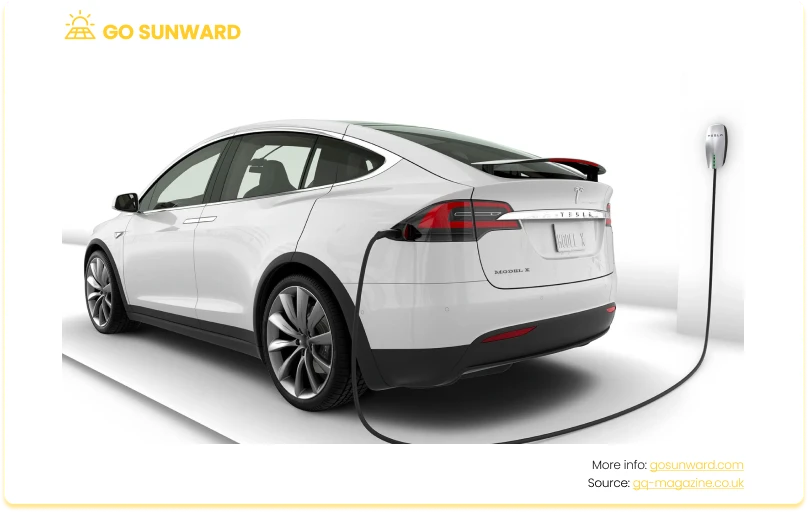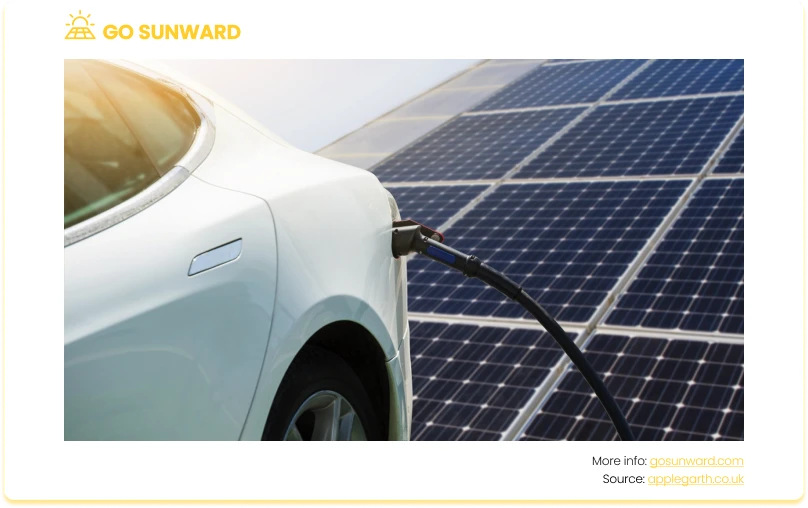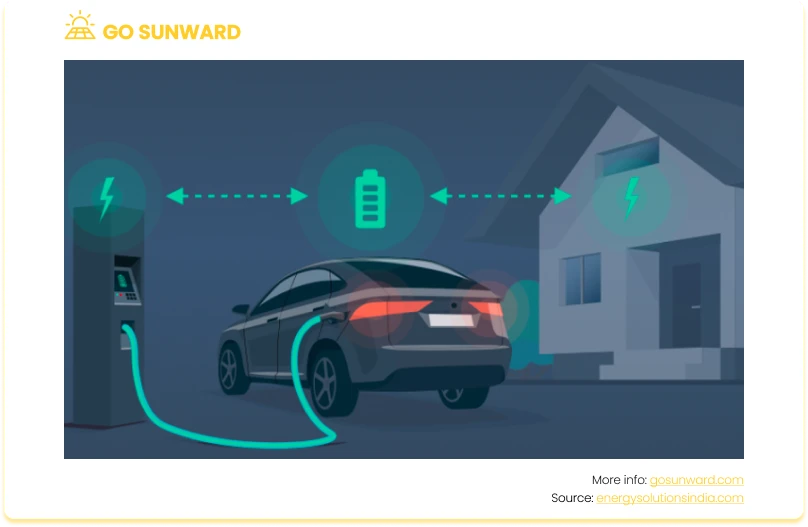How Many Solar Panels To Charge A Tesla? You’ll Be Surprised…
Imagine a world where electric vehicles (EVs) such as those produced by Tesla have become a standard sight on our roads, contributing to a quieter, cleaner, and more sustainable urban environment. In this evolving landscape, a critical question arises: “How many solar panels are needed to charge a Tesla electric vehicle?”
As we venture into the era of clean energy and the widespread adoption of electric mobility, this question assumes increasing significance, offering a glimpse into the promising future of transportation. This article will examine the factors influencing a Tesla’s energy needs and provide you with example calculations on how to work out how many solar panels are needed to meet this demand.
Understanding Tesla and Solar Energy
Tesla, founded by Elon Musk, has emerged as a pioneering force driving profound changes in the automotive industry. Tesla’s journey has redefined automotive technology and expanded the possibilities of what we expect from vehicles on our roads.
Tesla’s electric vehicles (EVs) have transcended the realm of automotive enthusiasts and become symbols of sustainable transportation. They hold the promise of significantly reducing our reliance on fossil fuels, a crucial step in mitigating the environmental impact often associated with traditional internal combustion engine vehicle.

Beyond its impact on electric vehicles, Tesla extends its influence into the sphere of clean energy, with solar power playing a central role in its offering. To find out more about Tesla solar panels and solar roofs, click on the links. Solar energy, harnessed directly from the sun’s abundant and renewable resources, aligns perfectly with Tesla’s commitment to sustainability. A powerful synergy emerges when Tesla’s electric vehicles are seamlessly integrated with its solar energy solutions, offering the potential for a new era of eco-conscious driving.

Factors Affecting Solar Panel Requirements
When determining the number of solar panels needed in a residential system to charge a Tesla effectively, several key factors come into play. These factors encompass a range of considerations, including the Tesla model you own, your daily driving habits, and the climate conditions of your region. Understanding these factors is crucial for making informed decisions about your residential solar panel system.
Tesla Model: Your specific Tesla model is a critical factor influencing your solar panel requirements. Different Tesla models exhibit varying energy consumption rates. For instance, a Tesla Model S typically consumes more energy per mile than a Model 3. Consequently, the Tesla model you drive directly impacts the quantity of solar panels needed to offset its energy consumption effectively.
Daily Driving Habits: Your daily driving habits play a pivotal role in determining the solar panel requirements for your Tesla. Elements such as your daily commuting distance and driving patterns (e.g., city or highway driving) significantly affect your Tesla’s energy consumption. Understanding your driving habits is essential for accurately estimating the energy your solar panels must generate to meet your needs.
Regional Climate Conditions: The climate conditions in your geographical area profoundly affect solar panel performance. Regions with ample sunlight and minimal shading conditions are optimal for solar energy generation. Conversely, areas prone to frequent cloud cover or extensive shading from trees or nearby structures may require additional solar panels to compensate for reduced sun exposure. Furthermore, the seasonal variations in sunlight levels further underscore the need to account for local climate conditions when determining solar panel requirements.
Understanding these factors provides the foundation for effectively assessing your solar panel needs for Tesla charging.
How Many Solar Panels To Charge A Tesla? The Calculator!
Once you have considered the aforementioned factors, you can then calculate the precise number of solar panels necessary to charge your Tesla efficiently.
Calculation #1: How Much Electricity Does a Tesla Need to Charge?
For the purpose of this example, we will use a Tesla model 3. The Tesla Model 3 is one of Tesla’s most popular and widely sold models. It has gained significant market share and is often considered a benchmark for electric vehicles, making it a relevant choice for many readers. While Tesla offers various models with different specifications, the Model 3 represents a mid-range option that balances affordability and range.
There are two versions of the Tesla Model 3 with different battery sizes and ranges:
- The standard Model 3 has a 50 kWh battery and can go up to 220 miles on a single charge.
- The long-range Model 3 has a larger 70 kWh battery and can travel up to 310 miles on one charge.
Let’s focus on the long-range version for this example.
On average, the U.S. Department of Transportation states that the typical American drives about 13,476 miles in a year, which translates to approximately 1,123 miles each month.
So, if you drive around 1,123 miles every month and the long-range Tesla Model 3 can cover 310 miles on a single charge, let’s figure out how many times you’ll need to charge it in a month.
1,123 miles driven / 310 miles per charge = Approximately 3.6 full charges per month.
To be safe and account for factors like battery wear over time, let’s round it up to 4 full charges per month.
Now, to calculate the total electricity needed:
70 kWh battery capacity x 4 charges per month = 280 kWh required each month.
Breaking it down by days:
280 kWh per month / 30 days in a month = About 9.3 kWh needed daily.
So, if you’re an average American driving 1,123 miles monthly (roughly 37 miles per day) with a long-range Tesla Model 3, you’ll need about 9.3 kWh of electricity per day for charging. This sets the stage for calculating how many solar panels are necessary to charge your Tesla Model 3 using solar power.
Calculation #2: How many solar panels are required to charge a Tesla Model 3?
The amount of electricity (kWh) a solar panel generates depends on its power rating and the amount of sunlight it receives. On average, in the United States, this can range from 4 to 6 hours of sunlight daily. For this calculation, we’ll assume an average of 5 hours of sunlight per day.
To determine the solar panel capacity needed to generate 9.3 kWh per day:
9.3 kWh per day / 5 hours of sunlight per day = 1.86 kW required.
To account for a slight power loss during the conversion process, we divide by 78 percent:
1.86 kW / 0.78 = 2.38 kW.
Now, we can find out how many solar panels with a power rating of 0.4 kW (or 400 Watts) are needed:
2.38 kW / 0.4 kW = Approximately 5.95 solar panels.
You would require approximately 6 additional 400W solar panels to charge the Tesla Model 3 with the long-range battery. Remember that the actual number of panels needed may vary based on the number of peak sun hours and the specific power rating of the panels used.
What Are The Benefits Of Using Solar To Charge Your Tesla?
Using solar power to charge your Tesla offers a range of compelling benefits that extend beyond simply providing clean energy for your electric vehicle.
Environmental Sustainability: Charging your Tesla with solar energy significantly reduces your carbon footprint. Solar power is renewable, emits no greenhouse gases, and helps combat climate change while reducing air pollution.
Cost Savings: Solar panels generate electricity from sunlight, reducing your reliance on traditional utility companies. Over time, this can lead to substantial savings on your electricity bills and potentially offset the initial installation costs.
Energy Independence: Solar power grants you a degree of energy independence. By generating your electricity, you become less reliant on external energy sources and less susceptible to price fluctuations.
Long-Term Investment: Solar panels have a long lifespan, typically around 25-30 years, with minimal maintenance requirements. This makes them a sound long-term investment that can offer a high return on investment over their lifespan.
Reduced Peak Demand: Solar energy production often aligns with peak energy demand times, contributing to grid stability and reducing the need for additional power plants during high-demand periods.
Grid Support: Some solar setups allow for bidirectional energy flow, enabling you to feed excess energy back into the grid. This can result in energy credits or revenue, further enhancing the financial benefits.
Incentives and Tax Credits: Many regions offer incentives, rebates, and tax credits for solar panel installations, making the initial investment of panels and inverter more financially attractive.
Increased Home Value: Solar panels can boost the resale value of your home. They are considered attractive features by environmentally conscious buyers.
Clean Transportation: Charging your Tesla with solar power represents a holistic approach to sustainability by combining clean energy generation with eco-friendly transportation.

Future Trends & Innovations To Look Out For
Looking ahead, the landscape of solar charging for Teslas is poised for significant transformation. Emerging trends and innovations are on the horizon, promising to revolutionize the way we harness clean energy for electric vehicles.
One key area of development is solar panel efficiency. Ongoing research and technological advancements are driving the creation of more efficient solar panels. These panels will be capable of producing higher electricity yields from the same amount of sunlight, making solar charging even more practical and accessible.
Another crucial aspect is the affordability of solar installations. As the solar industry continues to mature and expand, economies of scale are expected to lead to cost reductions. This means that the upfront investment required for solar panel systems and arrays will likely become more affordable for a broader range of Tesla owners.
Energy storage solutions, such as home batteries, are set to become integral components of solar charging setups. These systems will ensure consistent power availability, even when sunlight is limited or during grid outages, further enhancing the reliability of solar charging.
Advancements in smart grid technology will play a pivotal role in optimizing the use of solar power for electric vehicle charging. These innovations will enable real-time monitoring and control of energy flows, ensuring efficient and sustainable energy management.
The concept of vehicle-to-grid (V2G) technology is also gaining momentum. Tesla’s exploration of V2G capabilities means that Tesla owners may not only charge their vehicles with solar power but also contribute excess energy back to the grid. This bi-directional energy flow could lead to rewards or income for Tesla owners.

Lastly, Tesla’s commitment to sustainability and innovation will continue to drive progress in the field. Their ongoing research and development efforts are likely to yield groundbreaking solutions that integrate solar power, electric vehicles, and energy efficiency in novel and impactful ways.
Conclusion
In conclusion, the question of how many solar panels are needed to charge a Tesla unveils a complex interplay of factors. From the specific Tesla model to daily driving habits and regional climate conditions, the answer can vary widely. However, what remains consistent is the clear benefits of harnessing solar power for electric vehicle charging.
The use of solar energy not only aligns with sustainability and reduced carbon emissions but also offers long-term cost savings, energy independence, and potential financial incentives. As the solar industry continues to evolve, and solar panel efficiency improves, the feasibility of solar charging becomes increasingly accessible to a wider audience.




